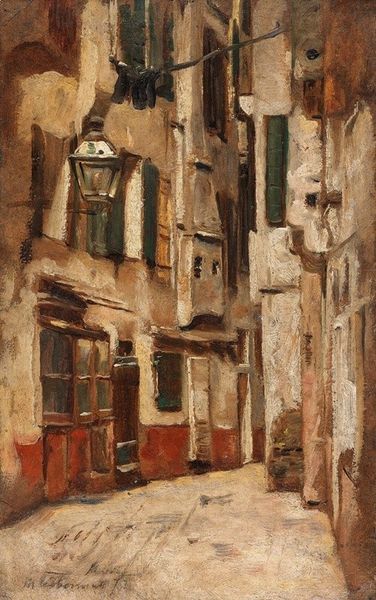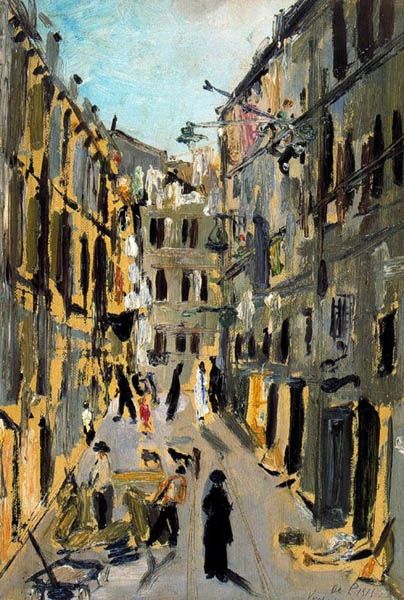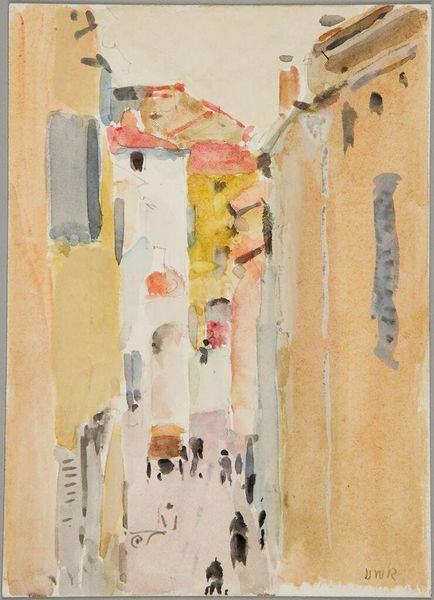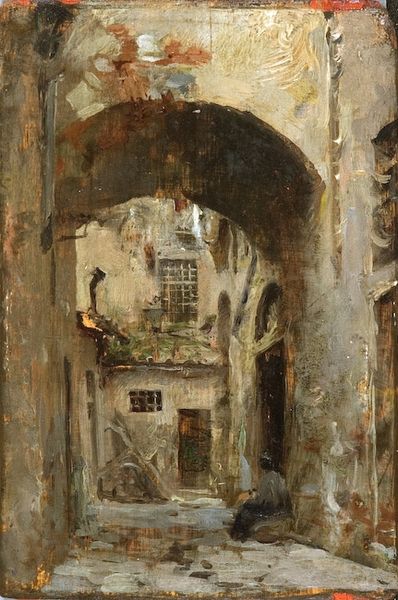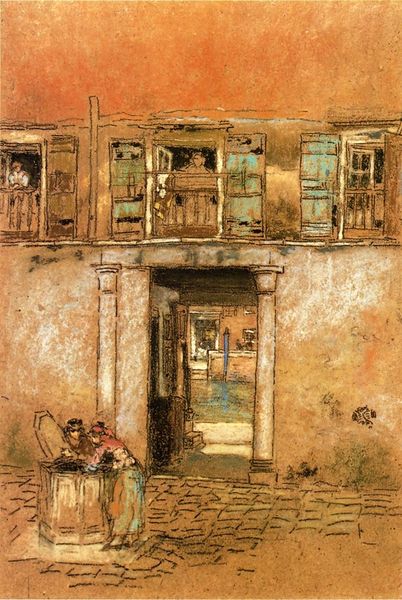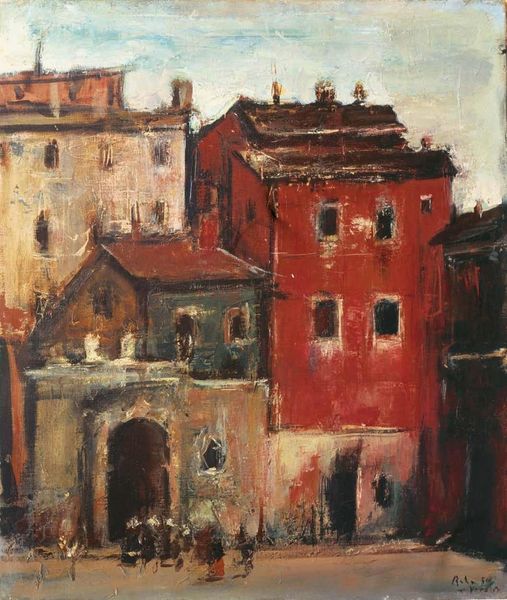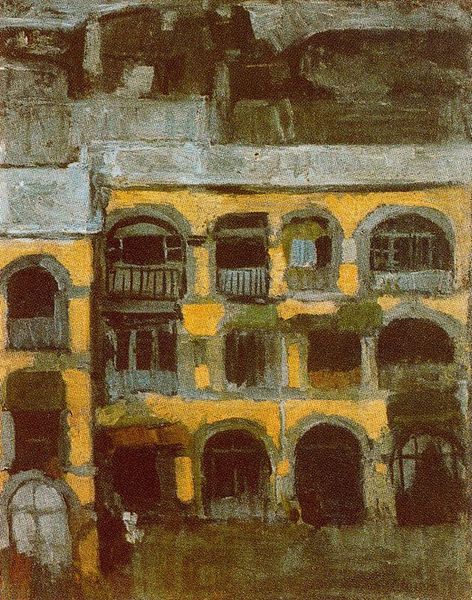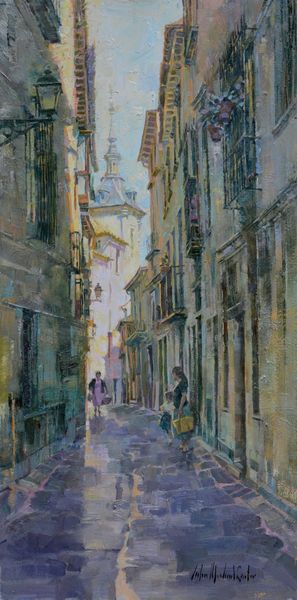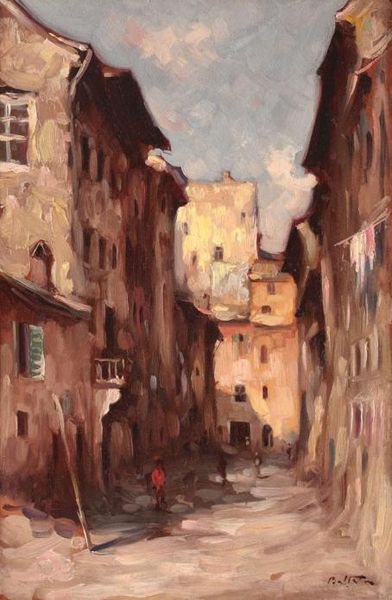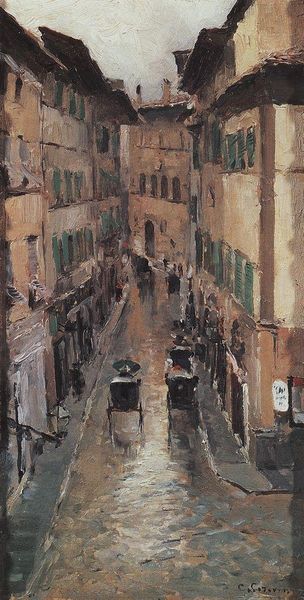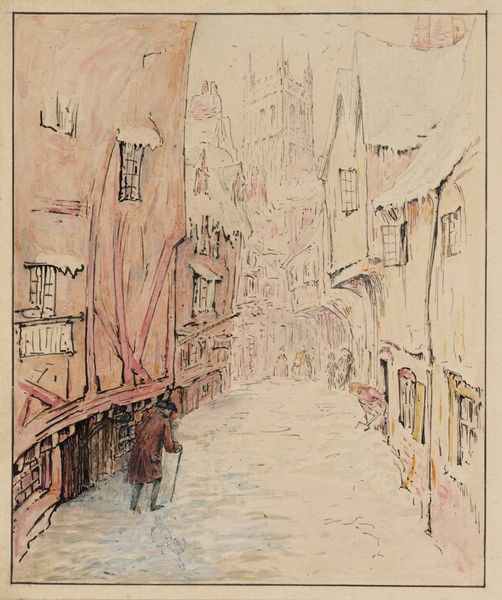
watercolor
#
water colours
#
impressionism
#
house
#
watercolor
#
cityscape
#
watercolour bleed
#
genre-painting
#
mixed media
#
watercolor
#
building
Dimensions: 15.2 x 30.5 cm
Copyright: Public domain
Curator: Looking at Whistler's "Corte del Paradiso" from around 1880, I'm struck by its melancholy mood, almost a sense of transience. Editor: The muted palette, the dissolution of form—the blues and greens bleeding into the gray paper, certainly contributes to that. There is an evocative quality to its incompleteness, a sense of a place slipping away. Curator: Exactly. For me, it speaks volumes about the complexities of labor and everyday life in Venice at that time. Whistler wasn't just painting pretty pictures; he was documenting a reality, hinting at social strata through the visible wear and tear on the buildings, the clothes hung out to dry. Those aren't just details; they are indicators of lives lived within specific economic conditions. Editor: True, but I find the composition even more compelling. The strong vertical thrust, the almost brutalist geometry softened by watercolor...it creates an intriguing tension. The eye is pulled upwards, almost against its will, by those strong vertical elements. There's a dialogue here between the structure and the suggestive looseness of the watercolour, pushing the genre towards abstraction. Curator: I agree about the compositional dynamism, but it's not divorced from its social implications. Consider the title, "Corte del Paradiso" or Court of Paradise. Whistler offers an ironic contrast; what kind of paradise is this? The peeling facades suggest anything but an idyllic existence. Whistler is slyly inserting social commentary, inviting us to question these spaces, who inhabits them, and at what cost. Editor: While I appreciate your perspective on labor and the socioeconomic realities reflected in the decay, I remain focused on the artistry of the composition itself, its sophisticated balance and tension between chaos and control. Even in rendering signs of possible degradation, he achieves remarkable formal harmony. Curator: Well, perhaps the tension is the point, then, between romanticizing Venice and recognizing its realities. Whistler avoids purely picturesque views to reveal something more nuanced, engaging with art historical precedents whilst simultaneously commenting on the lived experience. Editor: A tension that resides formally in the work and, historically, through shifting economies and cultural practices. It's fascinating how this tension speaks to both of our approaches, even across such divides.
Comments
No comments
Be the first to comment and join the conversation on the ultimate creative platform.

